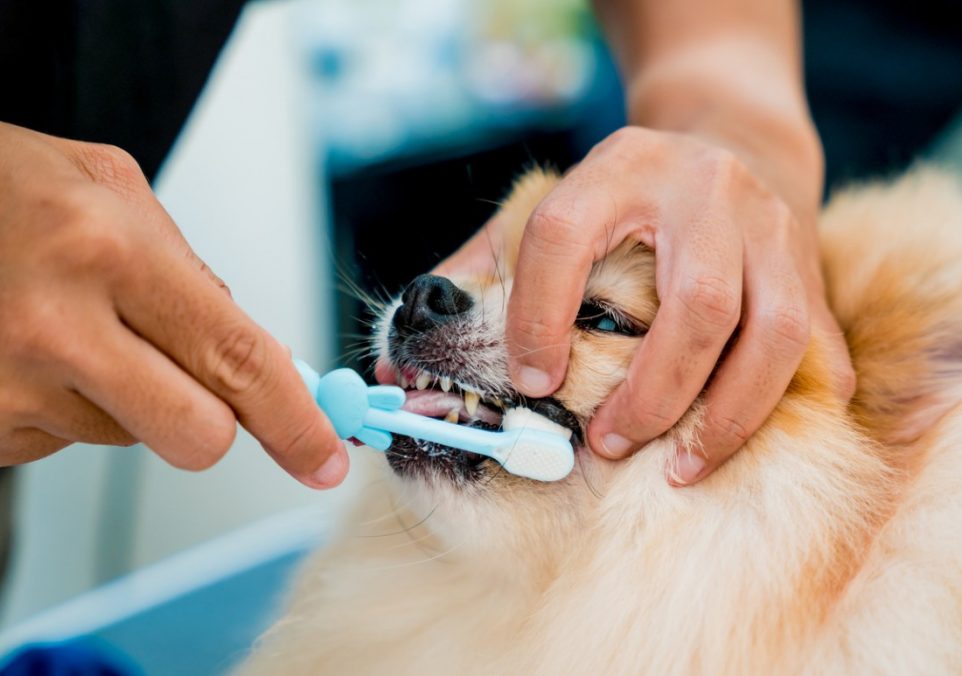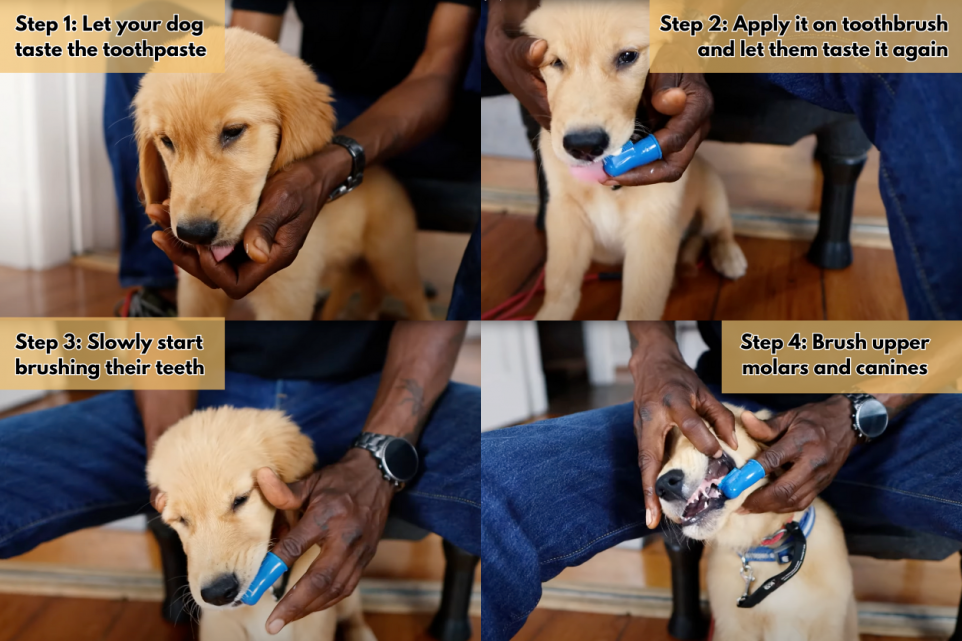How to Brush Your Dog’s Teeth for the First Time

Brushing your dog’s teeth might seem like just another chore on your pet care to-do list, but it’s actually a vital part of maintaining their overall health. Just like us, poor dental hygiene in dogs can lead to significant health issues. So, how to brush your dog’s teeth, especially for the first time? Here’s a step-by-step guide based on what I’ve learned, complete with some helpful tips to make the process as smooth as possible for both you and your furry friend.
Why It’s Important to Brush Your Dog’s Teeth
The state of your dog’s mouth can have surprising repercussions on their general well-being, affecting more than just their gums and breath. Did you know, for instance, that poor oral hygiene in dogs can lead to serious conditions like diabetes and heart disease, and in some severe cases, it might even cause a broken jaw?
The process begins with a buildup of plaque, which harbors harmful bacteria under the gumline. This isn’t just about bad breath; it’s an invitation for these bacteria to enter the bloodstream, potentially reaching vital organs and causing significant health issues. Dogs, stoic as they are, might not show signs of discomfort until the condition has severely progressed. They may continue to eat and behave normally despite being in pain, making it crucial for pet owners to take proactive steps in maintaining their dog’s dental health.
Periodontal disease, the most common dental condition in dogs, triggers an immune response that can be more damaging than the bacteria themselves. This inflammation can lead to tissue destruction around the teeth and, if left unchecked, may spread bacteria to distant parts of the body. Such conditions underscore the importance of regular dental care, including brushing your dog’s teeth, to prevent these potentially severe health issues.
Maintaining your dog’s dental health isn’t just about brushing—it’s about regular check-ups too. Veterinarians recommend annual oral exams, which might include anesthetized exams and X-rays to get a full picture of a pet’s dental health. This proactive approach can help catch and address potential issues before they escalate into more serious conditions.
By cleaning your dog’s teeth regularly and keeping up with veterinary dental check-ups, you’re not just ensuring fresher breath and a prettier smile for your pet; you’re also playing a critical role in managing their overall health.
How To Brush a Dog’s Teeth

First things first, you need the right tools. A toothbrush designed for dogs and canine toothpaste are essentials. Human toothpaste isn’t suitable for dogs due to its fluoride content, which can upset their stomach. Dog toothpaste usually comes in flavors that are appealing to them, like poultry, beef, or peanut butter, making the experience less stressful.
Before you start brushing, make your dog feel comfortable with the process. Start by letting them taste the toothpaste on your finger. This can help them get used to the texture and taste. Once they seem okay with that, let them lick some off of the toothbrush, then slowly start touching their teeth with the brush without making brushing movements just yet.
This step is about getting them used to the sensation of something else touching their teeth to make the first brushing session as positive as possible.
The Brushing Technique
Once your dog is comfortable, lift their lip gently and start with small, gentle motions on the outside of their teeth. Begin with small, easy-to-reach areas, allowing your dog to get used to the sensation. Use gentle motions and brush at a 45-degree angle to clean both the teeth and the gumline effectively. It’s important to be patient and keep the mood light; you can praise your dog and offer small breaks to keep them relaxed.
Consider using a finger brush, which might be less intimidating for your dog if using a conventional toothbrush feels too challenging. Finger brushes are worn on your fingertip, offering more control and allowing you to feel your dog’s teeth and gums, which can be reassuring for both you and your pet.
During the brushing process, make sure you reach the back upper molars and canines, as these teeth can collect a lot of tartar. If your dog seems resistant, focus on different sections of the mouth at different times rather than attempting to clean all the teeth in one go.
Some Training Tips
Consistency is key. Try to brush your dog’s teeth daily, but if that’s too ambitious given your schedule, aim for at least three times a week. Regular brushing not only helps in reducing plaque buildup but also gets your dog used to the routine.
If your dog resists, don’t force it. Go back a step where they were comfortable and progress slowly. Sometimes, just handling their mouth and cheeks without actual brushing can help build tolerance over time.
Reward them at the end of each brushing session. Whether it’s a dental treat approved by the Veterinary Oral Health Council (VOHC) or their favorite toy, create a positive reinforcement that helps them associate tooth brushing with something enjoyable.
Regular brushing will give you the opportunity to spot any potential issues like gum inflammation, bad breath, or unusual buildup on teeth. If you notice any of these signs, it might be time for a professional cleaning or a vet visit. Your vet can provide guidance tailored to your dog’s specific health needs.
Your Pet’s Best Interest, Always
At Pet Institute, we take pet care seriously. We're dedicated to transparency, impartiality, and the well-being of your pets in every article, review, and recommendation we provide. Our unwavering commitment to these principles ensures that you, our valued reader, always receive reliable and unbiased information. Let us be your trusted guide in the world of pet care and companionship.